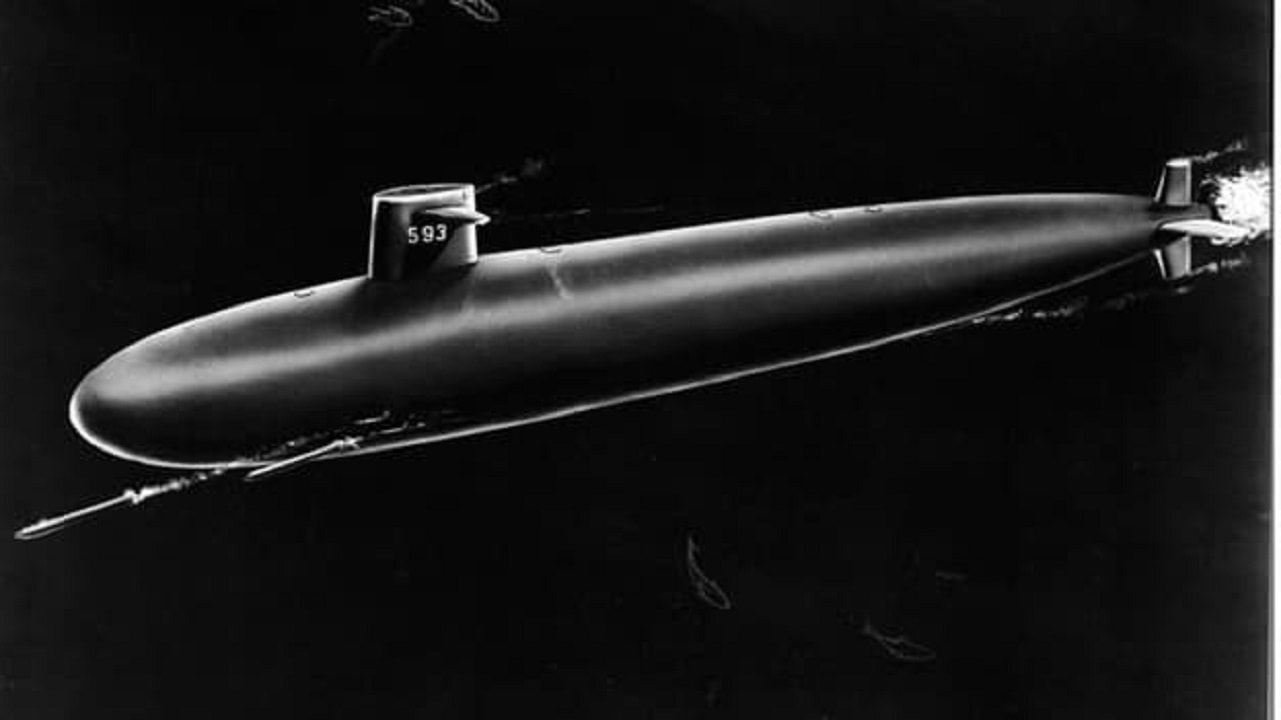USS Thresher: The Worst Submarine in U.S. Navy History? – The humiliating distinction for the worst submarine in U.S. Navy history goes to the USS Thresher. Its demise was a tragedy of epic proportions that killed everyone on board in 1963. It took a thousand-page document dump after a lawsuit and record request to find out more about what caused the accident. The Navy had kept details of the sinking quiet for decades, initially in order to keep secrets from the Soviets. The horrifying aspect of the incident was that crew members may have been alive frantically calling for help before the sub imploded and all 129-hands perished.
USS Thresher: The Sequence of Events
On April 10, 1963, the Thresher was conducting dive tests off the coast of Cape Cod. The sub was supposed to be able to go down deeper and run more silently than other U.S. submarines at the time. Then events happened quickly and what actually transpired became a mystery. What was happening with the Thresher? It first sent out a brief communication that said it was having small problems. The USS Skylark heard the transmission on the surface.
No Oral Communication from the USS Thresher
But no other verbal messages came from the Thresher, and only five minutes later, surface ships heard the sub breaking apart and sonar images spelled doom. They tried desperately to communicate with the Thresher to no avail. The people on board the Thresher were thought to have died immediately and the boat was destroyed instantaneously.
The USS Seawolf Would Not Give Up
The crew on the submarine USS Seawolf had an idea. During a search for survivors, after hearing pings from what they thought was the missing boat, they implored sailors on the Thresher to turn its signal beacons on and off to signal any sign of life. The Seawolf heard repeated keying signifying the beacons were working. This had sailors on the Seawolf believing that crew members on the Thresher were alive for several hours after the Thresher was reported missing.
The Seawolf then communicated with the Thresher to key its underwater telephone if sailors were still alive. The Seawolf initially heard five tones and then a total of 37 pings. This showed that the part of its electrical system was still functional. But then the pinging stopped – that meant the battery finally gave out.
Try Banging On Any Metal to Make a Sound
The Seawolf told what it thought were survivors to bang on the hull, and they heard what sounded like metallic noises coming from the Thresher. Every time the Seawolf wanted to communicate with other ships it had to surface. So, it was difficult to maintain contact with the Thresher. On the fourth dive, it stopped hearing anything from the Thresher.
What Happened After the Investigation?
The initial investigation said that the Thresher had a leak in the engine room that may be due to pipe corrosion. Then a short-circuit damaged the electrical components. This failure spread to other electrical systems on the ship. Controls of the ballast tanks that enabled the Thresher to come to the surface didn’t work. The deep see pressure proved too much and the sub imploded into six different pieces.
But when did that break-up happen? The Seawolf said it heard attempts to communicate for 24 hours after initial reports that it had gone missing.
Until the records release of 2021, this was never made public, even to the family members of the deceased.
Was the Seawolf Wrong?
The Drive.com reported even more mysterious details in July 2021.
“Unfortunately, the available account provides little in the way of detailed assessments of the sounds purportedly heard by the Seawolf but concludes that ‘None of the signals which Seawolf received equated with anything that could have been originated by human beings,’” writer Thomas Newdick wrote.
Other acoustic experts think the Seawolf got mixed up and was hearing sounds from ships that were also searching for survivors.
So, the Navy believed that the Seawolf was erroneous, and the crew of the Thresher died immediately.
The account from the Seawolf seemed like it was truthful. They couldn’t have just made up the story. Maybe they really were hearing other noises from other ships and the other submarine that were looking for survivors. It is still not clear what really happened.
Doomed Sub Forces Changes to Navy Undersea Practices
Was the USS Thresher the worst submarine in U.S. history? It was certainly the unluckiest. The Navy believed that the details of the wreck should not have been shared with the public at first. They said it was because of the need for secrecy during the Cold War, but it may have been because of what the Seawolf reported.
At least the families are able to inspect the records for themselves now. After the tragedy, the navy instituted changes to policies and procedures to keep this kind of wreck from happening again. New training for crew who were facing catastrophic damages was one of the reforms.
Whether the personnel aboard the Thresher initially survived or were instantly killed will continue to be a mystery. The submarine’s construction definitely failed due to the electrical problems and the ballast tank failure. Due to the wreck and resulting secrecy with inconclusive details having only been released from a recent lawsuit and FOIA request, the Thresher has to be considered the worst submarine in U.S. Navy history.
Now serving as 1945’s Defense and National Security Editor, Brent M. Eastwood, PhD, is the author of Humans, Machines, and Data: Future Trends in Warfare. He is an Emerging Threats expert and former U.S. Army Infantry officer. You can follow him on Twitter @BMEastwood.

